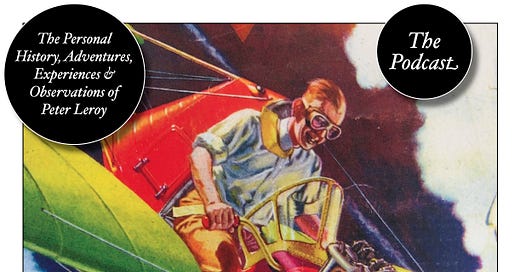HERE ARE examples of viewers’ reactions during the first wave of interest in Ariane, which for me represents roughly the first two years of her decade on display. They are, I think, typical of the kind of response that arose from, explored, and exulted in the relationship between audience and work:
Jonathan Pierce, writing in Big Deal, An Irreverent Review of the Arts:
Sitting in the audience, watching Ariane sitting in her living room, alone, or at any rate behaving as if she were alone, one is forced—no, enticed—to ask what it means to be alone, or what it means to be aware that we are alone. Certainly I do not feel alone here in the dark, in my seat of choice, in the farthest corner, but it is not my association with the others in the audience that makes me feel that I am a part of something: I do not feel a part of that mass. I prefer not to consider them at all. It is Ariane who makes me feel that I am not alone here. Ariane has become a part of my life—as I have of hers, though I have never made myself known to her. (And yet, when this is published, if a copy falls into her hands, she will certainly sit in her living room, on that sofa that I know so well, and read it, and for a moment—perhaps, if I choose my words right, forever—think of me.) We are like twin stars, a cosmological unit, bound in a gravitational dance, and we need each other. Without me, she might fly out of orbit and career across the heavens out of sight.
For about a year and a half, irregularly, with gaps, and sometimes with extended stretches of regular attendance, and including a couple of round-the-clock marathon sessions, I have watched Ariane live her life, and in the watching I have been prompted to think about my own. Who is keeping an eye on me, as I do on her? Who is interested in what I do, as I am interested in what she does? Who takes the trouble to examine my face to try to figure out what I’m thinking or feeling, as I do hers?
Jean Renoir, the French film director (and originator of the best title for a film ever created by anyone anywhere at any time: Grand Illusion), said in an interview that “It’s impossible to have a work of art without the spectator’s participation, without his collaboration. A film must be completed by the audience. . . . A film is as many films as it has viewers . . . if it’s a good film.” Poor Renoir had the misfortune to look quite a lot like a happy potato, but he was wise and sly and understood himself and his art, and he was exactly right about the collaboration of the spectator, exactly right about me and Ariane.
Ariane, continually on display, is a work completed by her audience, and she has chosen quite specifically to make herself such, but aren’t we all really in her circumstances? I have always had an audience; you have an audience. We all do, all the time, even when our audience is absent, because we carry with us the memory of the way they responded to us yesterday and we anticipate tomorrow’s reception. In that sense, we are never alone, and we can never really be alone. It is as if in every moment we were expecting a hidden camera to snap, automatically, a candid snapshot: a portrait of ourselves alone . . . but a portrait intended for public display. When the picture is put on display, we see that we were not alone at all, that the camera was there, and that the viewers who are now there were always potentially there, and that we were always performing for them, because we expected them to come to see us, to complement and complete us, to join us in the dance, to make us whole, as I do Ariane.
Norman W. Sheehan, (in a letter to Stoptime, a magazine for jazz enthusiasts):
I said to myself, “Here I am, completely in love with this woman, convinced that she is on this stage exclusively for my viewing pleasure, that she has chosen to do this for me, and every time she turns the radio on or puts a record on her hi-fi, she sets my teeth on edge. How can such a wonderful woman have such execrable taste in music?” Then I said to myself, “Wait! You can do something about this.” So I went out and bought her a sort of CARE package of decent music, a basic education in jazz. I sent it to her, with a brief note about my feelings for her, which I won’t bore you with here.
Words cannot express the thrill I felt when I saw the mailman deliver that package to her, watched her open it, smile at the note, and begin playing the records. I saw in her face the joy that I had felt as a boy when my uncle bought me a few of the records he had enjoyed (Artie Shaw—what can I say?) and I listened to them for the first time. It was as if she had given me back a piece of myself. No. Not “as if.” She had given me back a piece of my younger self. Do you recognize what happened between us? A classic call-and-response. Now we’re linked, jamming in the same ensemble.
Doris Fitzwilliam, “My Sister, Ariane Lodkochnikov,” in Serendipity Review:
I know that she is doing this for herself, but I am also convinced that she is doing it for me, for all of us. She is on that stage, living her life, for all the women who have spent their lives like rats in suburban mazes, wandering aimlessly from the laundry room to the kitchen, from the bathroom to the garbage cans, from the school grounds to the ball field to the kitchen stove. I am reminded of these lines from the Ars Poetica of Horace:
Tantum series juncturaque pollet
Tantum de medio sumptis accedit honoris!“What grace may be added to commonplace matters by the power of order and connection.” To the power of order and connection we might add the power of exhibition. Ariane elevates our mundane duties, dignifies the minutiae of our diurnal lives, and, I think, covers herself in glory, all through the profoundly simple act of putting herself on display. I thank her, and I thank her in my mother’s name, and in my daughter’s name. We are one.
[to be continued]
Have you missed an episode or two or several?
You can begin reading at the beginning or you can catch up by visiting the archive or consulting the index to the Topical Guide. The Substack serialization of Little Follies begins here; Herb ’n’ Lorna begins here; Reservations Recommended begins here; Where Do You Stop? begins here; What a Piece of Work I Am begins here.
You can listen to the episodes on the Personal History podcast. Begin at the beginning or scroll through the episodes to find what you’ve missed. The Substack podcast reading of Little Follies begins here; Herb ’n’ Lorna begins here; Reservations Recommended begins here; Where Do You Stop? begins here; What a Piece of Work I Am begins here.
You can listen to “My Mother Takes a Tumble” and “Do Clams Bite?” complete and uninterrupted as audiobooks through YouTube.
You can ensure that you never miss a future issue by getting a free subscription. (You can help support the work by choosing a paid subscription instead.)
At Apple Books you can download free eBooks of Little Follies, Herb ’n’ Lorna, Reservations Recommended, and Where Do You Stop?
You’ll find overviews of the entire work in An Introduction to The Personal History, Adventures, Experiences & Observations of Peter Leroy (a pdf document), The Origin Story (here on substack), Between the Lines (a video, here on Substack), and at Encyclopedia.com.














Share this post